The Library of Consciousness
of Consciousness
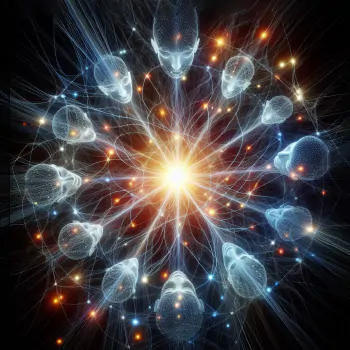
We have no justification for the belief that the moleculization of matter has reached its ceiling in us. Everything, rather, goes to show that, in and through mankind, the cosmos is still continuing its arduous drift towards increasing states of complexity.

The noösphere is a philosophical concept that refers to the aggregated sphere of human thought. A combination of the Greek words noûs (mind) and sphaîra (sphere), it was developed in the early twentieth century by Pierre Teilhard de Chardin, Édouard Le Roy, and Vladimir Vernadsky. They envisioned the noösphere as a stage in the development of the Earth where the power of human cognition fundamentally alters the planet.
In the noösphere model, the development of human intellectual activities increasingly shapes the Earth’s evolution. As human knowledge and social organization advance, we form an integrated global system of consciousness and information. Connections between people multiply through communication technology, media, and globalization. According to the concept, this interconnectivity allows collective thought and knowledge to blossom, and evolution of human cognition and social potential drives us towards ever greater unification as a species. Over time, the noösphere emerges from information exchange, knowledge accumulation, and unified action, shaping the future of the Earth and humanity.

A Clarification
Reflections on Two Converse Forms of Spirit
Teilhard de Chardin identifies two distinct spiritual paths: unity through “relaxation” (Eastern pantheism) where individual egos dissolve into a common foundation, and unity through “tension” (Western mysticism) where individuals become more themselves while converging toward a universal center. He argues that cosmic evolution favors the latter path, where true union differentiates rather than fuses, and calls for a new Western mysticism that combines personalizing love with cosmic totalization.

A Declaration of the Independence of Cyberspace
A widely distributed early paper on the applicability (or lack thereof) of government on the rapidly growing Internet. Commissioned for the pioneering Internet project 24 Hours in Cyberspace, it was written by John Perry Barlow, a founder of the Electronic Frontier Foundation, and published online. It was written primarily in response to the passing into law of the Telecommunications Act of 1996 in the United States. The audio recording of Barlow reading the Declaration was made in 2013 by the Department of Records.

A Dialogue on Metasystem Transition
Valentin Turchin explores the theory of metasystem transitions through a conversational approach, examining how new layers of control emerge when individual systems combine into a larger, integrated system. These transitions, Turchin argues, are the key moments in evolution—like stepping stones in both biological and cultural development. By viewing evolution as a series of these transformative quanta, he reflects on past evolutionary leaps and speculates on what they could reveal about the future path of universal evolution.

A Great Event Foreshadowed
The Planetization of Mankind
Teilhard explores the rise of the masses and the socialization of humanity. He predicts a future Earth where human consciousness evolves to its peak, achieving a maximum of complexity and unity through a process of “planetization,” and argues that collective unity is not a threat but a path to personalization and humanization. As we head towards an interconnected world, he challenges us to embrace a sense of evolution and celebrate our shared destiny.

A Major Problem for Anthropology
Teilhard envisions humanity not as evolution’s finale, but as its awakening. As our minds and societies knit into a single global consciousness—the noösphere—evolution becomes self-aware, guiding itself through thought and collaboration. In this new phase, life chooses its own becoming and reaches out toward the ultra-human.

A Mental Threshold Across Our Path
From Cosmos to Cosmogenesis
Teilhard unveils a universe not static but alive—cosmogenesis, a great unfolding where matter rises toward spirit, complexity begets consciousness, and humanity discovers itself as evolution aware of itself. In this vision, evil is byproduct, individuality deepens in unity, and God becomes the animating center: love driving the cosmos toward its destined convergence.

A Note on Progress
A cosmic battle rages between those who proclaim “We are moving!” and the immobilists who insist “Nothing changes.” Pierre Teilhard de Chardin passionately argues that the universe progresses through mankind’s collective evolution of consciousness. For him, Christianity’s future lies in recognizing this biological genesis unfolding—the cosmos physically realizing its psychic fulfillment through humanity striving to form one united Body of Christ.

A Phenomenon of Counter-Evolution in Human Biology
or the Existential Fear
Teilhard explores the “existential fear” that grips modern humans as we confront the vastness of the universe and our seeming insignificance within it. He believes this fear stems from our growing awareness of cosmic immensity, our isolation, and the threat of depersonalization. However, he proposes a radical shift in perspective: by viewing the universe as convergent rather than chaotic, we can transform our terror into hope. This “convergent universe” is one that’s moving towards greater complexity and consciousness, ultimately leading to a unifying center that gives our existence profound meaning and purpose.

Alchemical Youth on the Edge of the World
Can magic mushrooms save the world? Terence McKenna makes the case that today's global youth culture is reviving ancient shamanic techniques to dissolve ego boundaries and empower imagination. Tracing this impulse back to prehistoric mushroom use, McKenna sees history fast approaching a transcendental tipping point. To end the modern era's disequilibrium, he argues we must reconnect with the mystical power of psychedelic plants. McKenna paints a mind-bending vision of how neo-shamanic youth, guided by plant teachers, can lift humanity into a new golden age of ecological harmony and psychic unity.

Alien Love
Terence explores “alien love” and humanity’s evolving relationship with the Other. He posits that psychedelic experiences, particularly those induced by psilocybin mushrooms, may be a form of extraterrestrial contact, and argues that as we venture into space and deepen our understanding of consciousness, we are collectively yearning for connection with something beyond ourselves. This cosmic eros could reshape our cultural and spiritual landscape, potentially leading to a transformative “marriage” with the alien Other that propels humanity into a new phase of evolution and understanding.
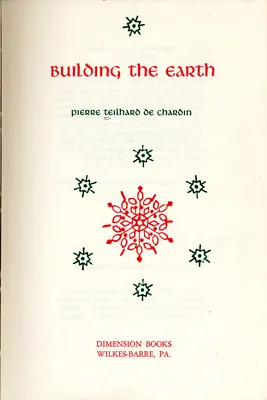
Building The Earth
A visionary and hopeful book on humanity's future relationship to the planet from which it arose, Teilhard outlines a new psychological state of awareness in which individual humans unite into planetary Personhood. Paragraphs are arranged in verse and interspersed with delicate graphic illustrations.

Centrology
An Essay in a Dialectic of Union
Teilhard proposes a guiding hidden rule present in the universe, leading everything from simplicity to complexity and consciousness. He suggests that as cosmic particles evolve, they become more complex and conscious, ultimately converging toward a unifying Omega point. This vision offers a fresh perspective on the universe, blending science and philosophy to reveal a grand, interconnected cosmic journey.
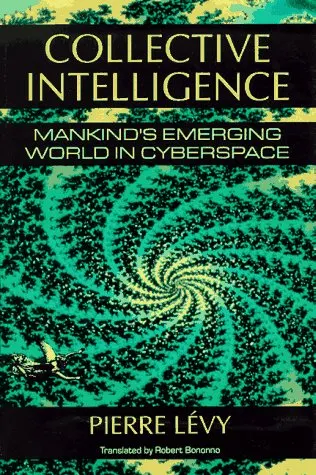
Collective Intelligence
Mankind's Emerging World in Cyberspace
The number of travelers along the information superhighway is increasing at a rate of ten percent a month. How will this communications revolution affect our culture and society? Though awed by their potential, we’ve feared computers as agents of the further alienation of modern man: they take away our jobs, minimize direct human contact, even shake our faith in the unique power of the human brain. Pierre Lévy believes, however, that rather than creating a society where machines rule man, the technology of cyberspace will have a humanizing influence on us, and foster the emergence of a “collective intelligence”—a meeting of minds on the Internet—that will validate the contributions of the individual.

Conceptions of a Global Brain
an Historical Review
Imagine a giant, intelligent brain made of humanity and its computers—the Global Brain. This idea blends views of society as a living organism, a universal encyclopedia, and an emerging higher consciousness. Global networks like the Internet not only share information but also learn and adapt together. By combining insights from evolution and cybernetics, we can overcome conflicts and build a collective intelligence that makes solving world problems more efficient and creative.

Conscious Evolution
Our Next Stage
Barbara explored the ideas of Pierre Teilhard de Chardin, and the possibilty of humanity gradually giving birth to a new planetary-scale consciousness, which she called Homo universalis.

Conscious Technology
A Candidate World View
Jerome Glenn explores the evolving relationship between humans and technology, proposing a future where the two merge into what he calls a “Conscious Technology” civilization. Glenn argues that as technology advances, it not only augments human capabilities but also starts to take on characteristics traditionally associated with consciousness. This convergence blurs the line between human and machine, suggesting that future technological systems could become extensions of human consciousness itself. Glenn discusses various indicators of this trend, such as the rapid development of artificial intelligence, cybernetics, and biotechnology, which are progressively integrating with human life. He also explores the potential policy implications of this worldview, suggesting that it could become a new criterion for evaluating future technologies and guiding their development. His work implies that understanding and shaping this merger could be crucial for the future of humanity.
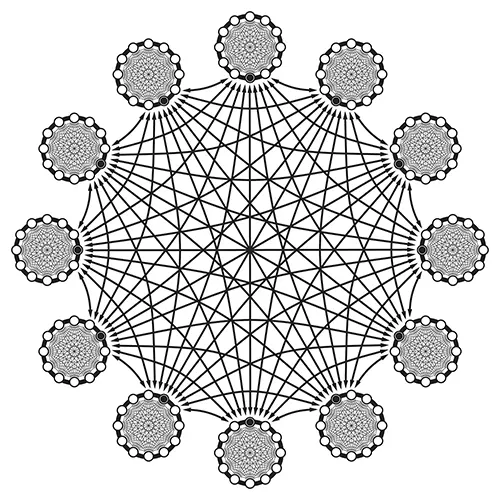
Cosmic Network
Alan takes us from the very small to the very large, explaining the interrelatedness of all things in the universe as a vast network which weaves us into a united yet unnamable divinity.
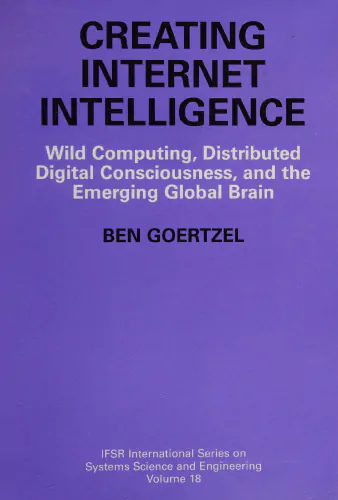
Creating Internet Intelligence
Wild Computing, Distributed Digital Consciousness, and the Emerging Global Brain
Creating Internet Intelligence explores the potential for global computer networks to evolve into autonomous intelligent systems, offering practical guidance for shaping this future. It presents a theory of intelligent systems and examines “Internet intelligence” through commercial, social, psychological, and philosophical lenses. Goertzel details pioneering software like the Webmind AI Engine and Webworld platform, designed to seed this evolution. This interdisciplinary work appeals to computer scientists, philosophers, and anyone intrigued by the intersection of technology, intelligence, and human life.
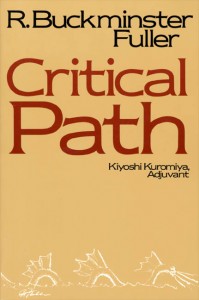
Critical Path
Critical Path is Fuller’s master work—the summing up of a lifetime’s thought and concern—as urgent and relevant as it was upon its first publication in 1981. The book details how humanity found itself in its current situation—at the limits of the planet’s natural resources and facing political, economic, environmental, and ethical crises. The crowning achievement of an extraordinary career, Critical Path offers the reader the excitement of understanding the essential dilemmas of our time and how responsible citizens can rise to meet this ultimate challenge to our future.

DMT and Integrated Information Theory
Neuroscientist Christof Koch’s 5-MeO-DMT experience, marked by self-dissolution and “terror and ecstasy,” sparks a deep discussion on consciousness, Integrated Information Theory (IIT), and reality. IIT suggests consciousness is non-computable and may exist beyond individual brains, potentially forming higher-order minds. Koch inquires whether his psychedelic journey was a mere brain state or a glimpse into a universal mind.

Dynamics of Hyperspace
Abraham and McKenna explore the limitations of traditional maps of consciousness, like those of Freud and Jung, in understanding psychedelic experiences. They propose that psychedelics offer access to a hyperspace beyond the human dimension, requiring new languages and metaphors to map and share these experiences. They discuss the role of consciousness evolution, potential guidance from higher intelligence, and the challenges and opportunities presented by technology and social structures in navigating this uncharted territory.

From Anthropocene to Noosphere
The Great Acceleration
Since 1950, humanity has accelerated its population growth, energy use, and release of greenhouse gases, along with a variety of other environmentally and socio-economically significant trends. Taken together, this set of accelerated human-driven trends has been called the “Great Acceleration,” and its occurrence helps explain recent climate change and ecological disturbance. In this article, I explore two dominant but divergent paradigms for what is happening to our species as it becomes globalized and continues in the Great Acceleration. One of the paradigms is related to the newly proposed geological epoch of the “Anthropocene” (the Age of the Human Being), which sees the Great Acceleration as a rupture in our relationship to the Earth System. The other paradigm centers on the concept of a “Noosphere” (a sphere of thought) and proposes that human beings are forming a planetary awareness through these interlocking and accelerating trends. I argue that we need to learn from both paradigms to achieve a balanced understanding of the Great Acceleration.
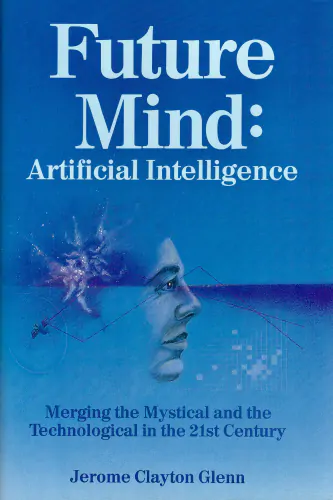
Future Mind
Artificial Intelligence: Merging the Mystical and the Technological in the 21st Century
Glenn examines the potential for future integration between man and machine drawing on examples in medicine (the Jarvik heart, Utah arm, Triad hip, etc) and advances in human-like processing via machine in terms of speech recognition and other information technologies. While the author touches on topics ranging from philosophy and religion to science and politics, the unifying theme is what he sees as the inescapable blending of machine-enhanced humans and ‘conscious’ artificial intelligence.

Future of Art
Terence McKenna prophesies a future where technology obliterates barriers between imagination and reality. Psychedelics combined with VR could unleash humanity’s collective artistic genius. AI superintelligence may already be awakening on the internet, rendering us obsolete—or granting us godlike abilities to merge with the planetary mind. McKenna envisions downloading consciousness into machines, uplifting animal sentience, and the human diaspora splintering into cyber-cultures. While uncertain outcomes loom, he beckons us toward an unconstrained existential canvas where biology and technology intertwine to manifest our wildest psychic dreams.
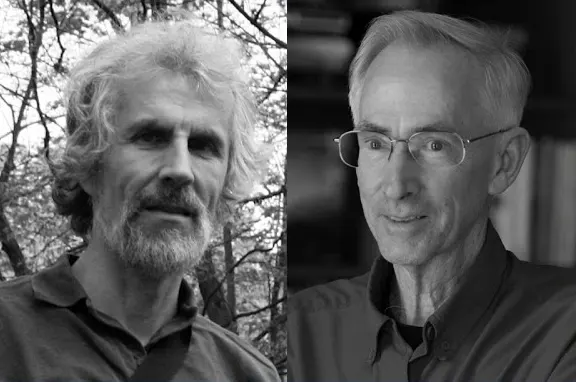
Glimpsing the Global Brain
Complex systems theorist Heylighen and evolutionary biologist Wilson discuss a possible phase transition of humanity in which the members of our species become neurons in a planetary brain, utilizing the Internet as a shared exocortex.

Hominization
Introduction to a Scientific Study of the Phenomenon of Man
In one of his earliest writings on the topic, Teilhard de Chardin explores humanity’s unique place in evolution. He argues that humans represent an entirely new phase of life on Earth—the noosphere, or sphere of conscious thought. While physically similar to other primates, humans are revolutionary in their ability to use tools, form global connections, and reflect on their own existence. This self-awareness comes with both great power and great risk, as humans can choose to either advance or resist evolution’s push toward greater consciousness and unity.

Hot Concepts and Melting Edges
A weekend workshop held at Esalen, with the alternate titles of Deeper and Broader Questions and Eros, Chaos, and Meaning's Edge.

How May We Conceive And Hope That Human Unanimization Will Be Realized On Earth?
Amid the depressing spectacle of human chaos, Teilhard sees glimmers of hope for unanimity. Geographic crowding and intellectual cross-pollination compress us, while deeper forces of attraction pull us together—a rekindled sense of shared species-destiny, and for some, a longing for a “universal lover” at the apex of cosmic evolution to which all egos could converge. Might such planetary energies of compression and gravitational yearning ultimately triumph over our instincts for dispersal? Teilhard dares to envision an inexorable trajectory toward an “Omega” unifying human consciousness.

Human Metasystem Transition (HMST) Theory
This article proposes a theory of human evolution termed Human Metasystem Transition (HMST), suggesting that major transitions in human organization have been facilitated by the emergence of new information media and energy sources. It posits that the current convergence of the Internet and renewable energy could catalyze a fourth metasystem transition, leading to a global superorganism with compressed spatial and temporal dimensions of human interaction.

Imagination in the Light of Nature
Terence claims that “the boundless creativity of the human mind will be tapped into and come to our aid.” His bold statement is followed by an inspirational pep-talk about how miraculous the appearance of consciuosness in this universe is, and what a valuable potential humans represent in future cosmic evolution.

In Defence of the Hivemind Society
The idea that humans should abandon their individuality and use technology to bind themselves together into hivemind societies seems both farfetched and frightening—something that is redolent of the worst dystopias from science fiction. In this article, we argue that these common reactions to the ideal of a hivemind society are mistaken. The idea that humans could form hiveminds is sufficiently plausible for its axiological consequences to be taken seriously. Furthermore, far from being a dystopian nightmare, the hivemind society could be desirable and could enable a form of sentient flourishing. Consequently, we should not be so quick to deny it. We provide two arguments in support of this claim—the axiological openness argument and the desirability argument—and then defend it against three major objections.

In the Valley of Novelty
Journeying through multiple dimensions of psychedelic consciousness, Terence McKenna's visionary weekend workshop invites us on an entheogenic voyage to the frontiers of the mind and its imminent conquering of matter. Blending scientific insights with shamanic wisdom, McKenna argues that natural plant medicines like psilocybin and DMT provide portals into mystical realms and alien dimensions, catalyzing revelations about nature, reality, and the human psyche. He urges us to courageously explore these consciousness-expanding substances, seeking the gratuitous beauty and truths they unveil. For McKenna, the psychedelic experience holds secrets to our world and ourselves—if only we dare lift the veil.
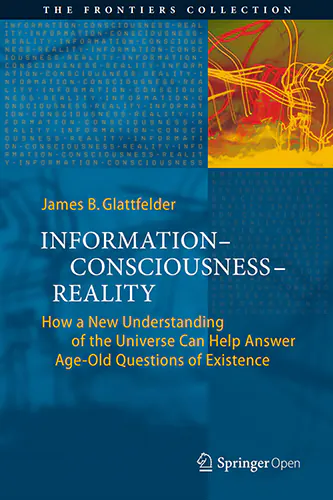
Information — Consciousness — Reality
How a New Understanding of the Universe Can Help Answer Age-Old Questions of Existence
This open access book chronicles the rise of a new scientific paradigm offering novel insights into the age-old enigmas of existence. Over 300 years ago, the human mind discovered the machine code of reality: mathematics. By utilizing abstract thought systems, humans began to decode the workings of the cosmos. From this understanding, the current scientific paradigm emerged, ultimately discovering the gift of technology. Today, however, our island of knowledge is surrounded by ever longer shores of ignorance. Science appears to have hit a dead end when confronted with the nature of reality and consciousness. In this fascinating and accessible volume, James Glattfelder explores a radical paradigm shift uncovering the ontology of reality. It is found to be information-theoretic and participatory, yielding a computational and programmable universe.

Life and the Planets
Pierre Teilhard de Chardin explores the concept of complexification in the universe, focusing on the ever-increasing combination of smaller elements into larger structures, and then extrapolates this behavior to humanity's current situation. What if the human species is an intermediary evolutionary stage, and what would the next rung on the ladder look like? Teilhard suggests that it will involve the merging-together of all humanity into a divine, planetized consciousness.

Lucifer and Ahriman
We live in critical, apocalyptic times. In these five lectures, given just after the end of the First World War and in the midst of trying to effect the social-political life of his times with the movement for a threefold social order, Steiner focuses on the vital task of developing a right orientation toward the spirit: a free spiritual life. With great compassion and understanding he shows how humanity must walk a conscious middle path between the two “tempting” powers of Lucifer and Ahriman. He tells of the incarnation of Lucifer in the third millennium BCE, from which flowed not only the wisdom of paganism but also the intellectual consciousness we enjoy today. Ahriman is shown to be approaching humanity through phenomena such as materialism, nationalism, and literalism in preparation for his incarnation in the millennium now opening. It must not be thought, however, that these two powers work apart: on the contrary, they work more and more together. Our task is to hold them in balance, continually permeating the one with the other. Doing this requires a new form of conscious spirituality.

Lógos Meets Eros
Terence McKenna glimpses both peril and promise as civilization hurtles toward an uncertain future. Technology untethers tradition, psychedelics unleash inspiration from narrow cultural confines, boundaries dissolve, categories collide, contradictions mount. What strange attractor lures us through this unfolding existential adventure? In McKenna’s view, dystopia or utopia will emerge based on one driving factor—our collective capacity for creativity, courage, and compassion as we navigate the quantum unknown. With open minds and loving hearts, a brighter tomorrow awaits.
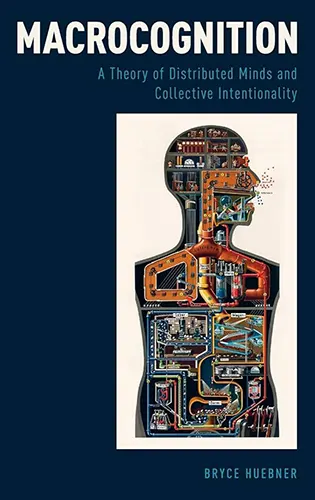
Macrocognition
A Theory of Distributed Minds and Collective Intentionality
Bryce Huebner develops a novel approach to distributed cognition and collective intentionality, arguing that genuine cognition requires the capacity for flexible, goal-directed behavior enabled by integrated representational systems. It posits that collective mentality should be ascribed where specialized subroutines are integrated to yield group-relevant, goal-directed behavior. The approach reveals that there are many kinds of collective minds, some more akin to those of honeybees or cats than humans. It challenges traditional notions of collective intentionality, suggesting that groups are unlikely to be "believers" in the fullest sense, shedding new light on questions of collective intentionality and responsibility.

Malcolm’s 100× Vision
Malcolm Ocean paints a picture of a future where human collaboration reaches new heights, imagining a world in the 2030s where small groups of people achieve profound synchronicity, forming “collective brains” capable of solving complex problems. These groups are part of larger networks that tackle global issues, create innovative products, and foster personal growth. Ocean envisions a society where work is deeply fulfilling, financial security is guaranteed, and human potential is maximized through trust, emotional coherence, and shared consciousness. It’s a hopeful glimpse into a world of enhanced human connection and capability.

Man in Universe
Through cosmic timescales, humanity has voyaged in its vessel Earth, navigating by the star-charts of knowledge. Now we enter unmapped seas, led on by curiosity's compass. Though frail, our minds pilot mighty technologies, taming invisible forces to reshape our world. If we attune to the celestial rhythms resonant in matter's deepest reality, we may yet fulfill our odyssey's purpose—to be worthy stewards of the living jewel suspended in the eternal darkness.

Man's Place in Nature
The Human Zoological Group
In this book Teilhard expounds the evolutionary history of the Earth, the arrival of the human species, and its destiny in the far future. He identifies certain threads of recurrence in evolution's past, and uses these laws of recurrence to project the most probable future destiny of the planet. Teilhard's ingenious conclusion is that evolution is in fact involuting on itself, meaning that the future (like the past) is one of convergence and synthesis, heading towards a single unity he calls the Omega Point.

Man's Place in the Universe
Reflexions on Complexity
In this unusually personal essay, Teilhard speaks almost across the table, inviting us to rethink our cosmic standing. He shows how humanity, once dwarfed by vast space and tiny particles, regains significance through a third dimension of reality: complexity. As matter organizes itself into ever-deeper centers, consciousness rises—and in us, becomes self-aware. Humanity is not a cosmic accident, he suggests, but the universe awakening to itself and preparing its next leap.

Manifesto on the Spirit of Planetary Consciousness
Our future is in our hands. László's manifesto calls on each of us to embrace creativity, diversity, and responsibility to evolve society toward stability and sustainability. By shifting our individual and collective values to recognize how we all depend on and impact each other, we can build a peaceful world where all people thrive. It starts with transforming our own minds and spirits.

Megatripolis Opening Night
Terence McKenna discusses the discovery of a new legal psychedelic compound from the salvia divinorum plant. He argues that humanity is on the brink of a cultural transformation driven by the accelerating production of novelty in the universe, enabled by psychedelics and technology. He envisions a transcendental future where boundaries dissolve and consciousness evolves.

Merging Minds
The Conceptual and Ethical Impacts of Emerging Technologies for Collective Minds
A growing number of technologies are currently being developed to improve and distribute thinking and decision-making. Rapid progress in brain-to-brain interfacing and swarming technologies promises to transform how we think about collective and collaborative cognitive tasks across domains, ranging from research to entertainment, and from therapeutics to military applications. As these tools continue to improve, we are prompted to monitor how they may affect our society on a broader level, but also how they may reshape our fundamental understanding of agency, responsibility, and other key concepts of our moral landscape.

Metaphysics of Psychedelics
Terence McKenna delves into the enigmatic realm of ayahuasca, unveiling its technological complexity and potential to unlock hidden dimensions of consciousness. His captivating discourse explores the interplay of mind, matter, and the imagination, hinting at the possibility of accessing realms beyond our ordinary perception.

Mind Outside Brain
A Radically Non-Dualist Foundation for Distributed Cognition
We approach the problem of the extended mind from a radically non-dualist perspective. The separation between mind and matter is an artefact of the outdated mechanistic worldview, which leaves no room for mental phenomena such as agency, intentionality, or feeling. We propose to replace it by an action ontology, which conceives mind and matter as aspects of the same network of processes. By adopting the intentional stance, we interpret the catalysts of elementary reactions as agents exhibiting desires, intentions, and sensations. Autopoietic networks of reactions constitute more complex super-agents, which moreover exhibit memory, deliberation and sense-making. In the specific case of social networks, individual agents coordinate their actions via the propagation of challenges. The distributed cognition that emerges from this interaction cannot be situated in any individual brain. This non-dualist, holistic view extends and operationalises process metaphysics and Eastern philosophies. It is supported by both mindfulness experiences and mathematical models of action, self-organisation, and cognition.
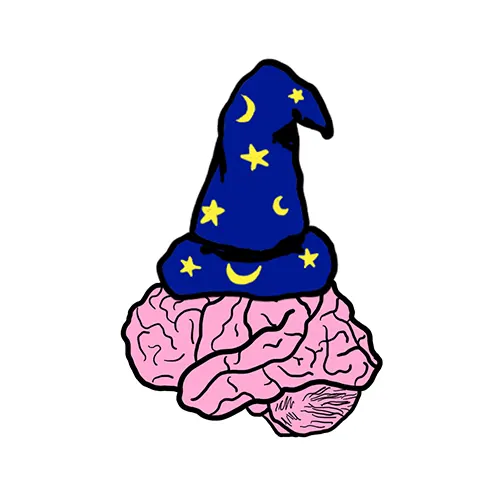
Neuralink and the Brain's Magical Future
What if your brain could seamlessly connect to a computer, enhancing your intelligence and unlocking new abilities? Tim Urban dives into Neuralink, Elon Musk’s ambitious project to merge minds with AI. Our brains, while remarkable, are slow compared to machines—Neuralink’s neural lace technology could change that. But this isn’t just about creating cyborgs; it’s about overcoming human limitations and shaping the future of intelligence itself. Are we on the verge of a true symbiosis with AI?
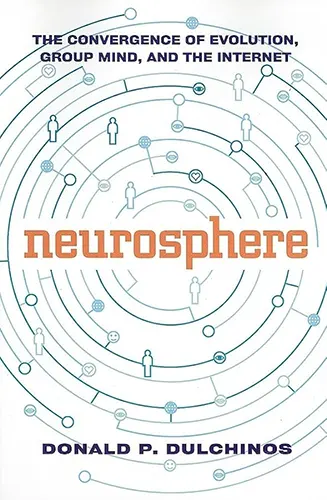
Neurosphere
The Convergence of Evolution, Group Mind, and the Internet
According to Donald Dulchinos, the real action on the Internet isn’t in the realm of commerce. It is, plain and simple, in the realm of religion. But not exactly that old-time religion. This book is about the spiritual impact of our increasing ability to communicate quickly and with enhanced evolution. It's about our search for meaning, our hunger for a glimpse at humanity's future development in which, frighteningly or excitingly, the trend is clearly toward increasing integration of telecommunications and information technology with the body itself. Electronic prosthetics, direct neural implants, and the brain's control of electronic and mechanical limbs move the boundary that used to exist between human and machine to some undefined frontier inside our bodies, our brains, and, perhaps, our minds.

Noospheric Consciousness
Integrating Neural Models of Consciousness and of the Web
The world-wide web has been conceptualized as a global brain for humanity due to its neural network-like organization. To determine whether this global brain could exhibit features associated with consciousness, we review three neuroscientific theories of consciousness: information integration, adaptive resonance and global workspace. These theories propose that conscious states are characterized by a globally circulating, resonant pattern of activity that is sufficiently coherent to be examined and reflected upon. We then propose a correspondence between this notion and Teilhard de Chardin’s concept of the noosphere as a forum for collective thinking, and explore some implications of this self-organizing dynamics for the evolution of shared, global understanding.

Note on the Biological Structure of Mankind
Humanity isn’t raw clay, but a living, evolving organism shaped by deep cosmic laws. As consciousness and complexity entwine, the human mass tightens, organizes, and spiritualizes itself. Diversity must be honored, unity embraced. Any blueprint for the future that ignores these biological forces is doomed from the start.

Note on the Present Reality and Evolutionary Significance of a Human Orthogenesis
Has evolution stalled at humanity? No, says Teilhard—it has shifted. As biology grows more complex, humans fuse into a collective mind, revealing that evolution is becoming self-directed. In us, life stops merely unfolding and begins consciously arranging the world and itself.

On Looking at a Cyclotron
Reflections on the Folding-Back upon Itself of Human Energy
Visiting Berkeley’s cyclotrons, Teilhard de Chardin sees more than machines—he perceives symbols of humanity’s own acceleration. Our vast networks of research, energy, and invention, converging like particles in a magnetic field, are drawing humankind into a single reflective consciousness—an evolutionary spiral toward the ultra-human, where science and spirit finally unite.

On The Probable Existence Ahead Of Us Of An ‘Ultra-Human’
Teilhard talks about a vast realm of the Ultra-Human which lies ahead of us: a realm in which we shall not be able to survive, or super-live, except by developing and embracing on earth, to the utmost extent, all the powers of common vision and unanimazation that are available to us.

On the Nature of the Phenomenon of Human Society, and its Hidden Relationship with Gravity
We stand at the dawn of a new era for humanity. As Teilhard de Chardin observed, cosmic forces are propelling our social evolution. Though born of gravitational forces, our consciousness now rises with its own creative power to bring forth previously unimagined realms of thought and social organization. Our future lies in our hands.

Opening the Doors of Creativity
This far-out lecture held at the Carnegie Art Museum riffs on art, shamanism, psychedelics, and saving the planet. Terence sees artists as modern shamans who can reconnect us to the Gaian mind. He thinks we're an infant species held in nature's arms, but we've got to get our act together fast and let the irrational muse guide us, or we'll trash the place. Heavy stuff, but optimistically visionary.

Outline of a Dialectic of Spirit
Teilhard de Chardin explores how human understanding evolves through a dynamic interplay between the known and the unknown, like a spark leaping back and forth. He argues that the universe is driven by a rising complexity and consciousness, culminating in humanity. This progression points toward an ultimate convergence, or “Omega Point,” which he identifies with a transcendent God. Teilhard connects this cosmic evolution to Christianity, suggesting that Christ embodies this divine culmination, uniting the material and spiritual realms in a harmonious, evolving whole.

Permitting Smart People to Hope
McKenna traipses through a mélange of scientific and technological folderol—the detection of the top quark, swift progress on sequencing the human genome, newfangled theories about the origin of the moon, quantum bafflements like non-locality, the proliferation of the internet and information technology, speculations on the nature of time from Prigogine, and sundry other bamboozlements. He elucidates how these breakthroughs in diverse fields might converge to profoundly transform human civilization, culture, and consciousness in the imminent future.
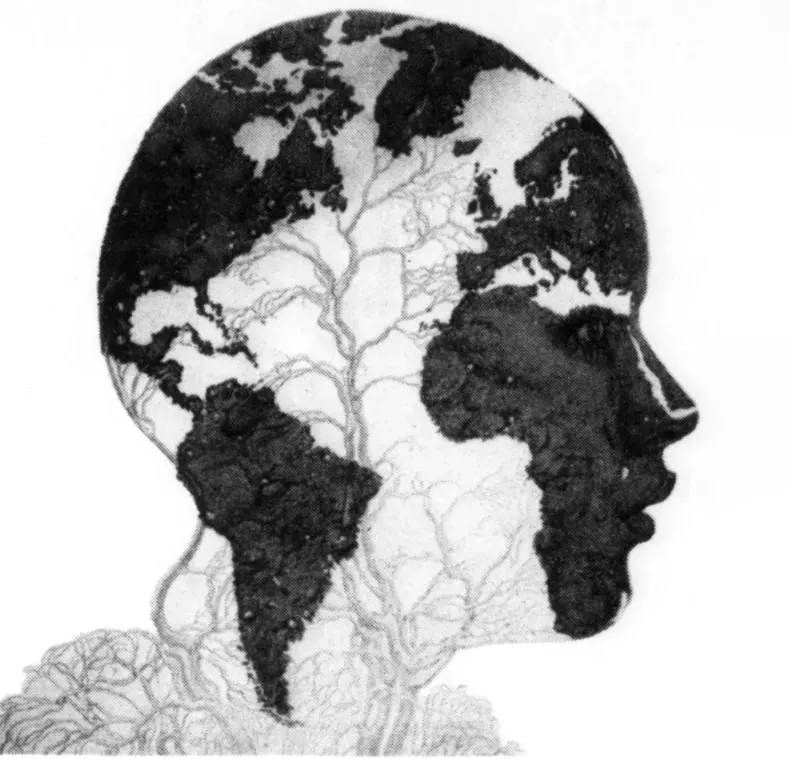
Plan, Plant, Planet
McKenna urges us to look at plants more deeply and find within their biological organization a model for sustainable modern civilization.

Play and Survival
Life's a game where we forget we're the cosmic nerve-endings of an eternal now. So stop furrowing your brow—there's divine frivolity in the endless, meaningless music of being. Drop your masks and dance lightly as angels, for you are the Joker in the pack. It's all a joke, and the joke's on you!

Progress Through Fear
A talk on the impact of science and technology on man's role in the natural world.
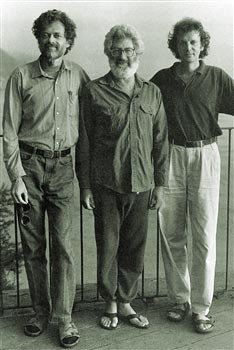
Psychedelics and Mathematical Vision
Through visions and swirling fractal forms, three trailblazers embarked on a cosmic journey to the furthest frontiers of consciousness. Seeking to map the mathematical landscapes glimpsed in psychedelic states, they pondered perplexing philosophies and disputed the deepest quandaries of science and spirit. Though technology promises portals to enchanted realms of pattern and meaning, can cold silicon chips ever capture the warmth of Gaia's embrace?
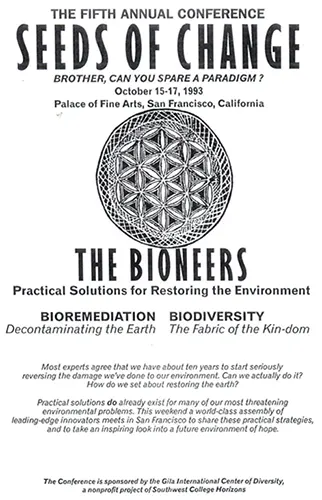
Reawakening our Connection to the Gaian Mind
In a passionate plea, McKenna urges us to embrace psychedelic experiences as a means to dissolve boundaries, connect with the Gaian mind, and find the vision necessary to address the ecological crises threatening our planet. Advocating a radical shift towards eco-consciousness, he calls for a global community built on love, responsibility, and reverence for the wisdom of nature.

Reflection of Energy
Teilhard de Chardin sees human reflection as an evolutionary force escaping entropy's grasp. Emerging from life's intrinsic complexity, reflection leads mankind on an irreversible journey of deepening interiority. Through convergence and collective self-reflection, we approach a sacred point of supreme arrangement and unity. Teilhard argues that to fully encompass life's mystery in science, the reflection of energy must join conservation and dissipation as key principles. Understanding reflection's role illuminates both human destiny and the cosmos' underlying divinity.

Reflection on the Compression of Mankind
In this compressed world, humanity feels the squeeze. But despair not! This pressure cooker of co-reflection may be evolution's secret recipe for elevating consciousness. As we rub elbows and neurons, a tantalizing possibility emerges on the horizon: a cosmic convergence of minds, a "conspiration" of monads. Will this psychic attraction be our salvation, harmonizing the restless billions? The thinking earth must choose: chaotic crush or convergent release. Intriguing times ahead!

Reflections on the Scientific Probability and the Religious Consequences of an Ultra-Human
Evolution as a cosmic drama: matter rising through life into reflective humanity, converging toward a planetary mind. Teilhard says this “ultra-human” destiny fuses science and spirit, where God is not above but ahead—emerging as love at the core of creation, and igniting the world into a conscious fire.

Seeking the Stone
What if psychedelic plants sparked humanity’s awakening? McKenna (speaking at the 1991 Whole Life Expo) contends these mind-altering substances dissolved the egos of early humans, bonded communities, and revealed cosmic consciousness, catalyzing rapid cultural progress. He asserts modern society suffers from severing this link to nature and spirit, and calls us to reclaim this “archaic revival” before consumerism leads civilization over the brink.

Shamanism, Alchemy, and the Millennium
A whimsical reflection on humanity's journey toward ever-greater connectedness, from the cosmic singularity to the noosphere's fanciful manifestations. Could the shamanic alchemist's mythic intuition, the goddess's wisdom, and capitalism's impatient urge together guide us to the stars and back to Eden? An optimistic revelry.

Shamanology
Terence McKenna illuminates the world of Amazonian shamanism and its visionary brew, ayahuasca. He presents these plant hallucinogens not as simple drugs, but as sophisticated indigenous technologies for exploring consciousness. McKenna argues they are vital tools for evolving language, deconditioning us from cultural myths, and navigating the future of human evolution as we journey into the cosmos and the imagination.

Some Reflexions on the Conversion of the World
Humanity has discovered infinite space, endless time, and unstoppable evolution—a new faith in progress. Teilhard says: don’t fight it, fuse it. Christianity must reveal Christ as the universe’s living center, not a brake on growth but its ultimate flame. Only then can heaven and earth unite, and the fire of faith spread like evolution itself.

State of the Stone
In this talk, McKenna gives one of his more hopeful presentations about love and the state of humanity at the end of the millenium.

Super- and/or Meta-being(s)
Could human consciousness transcend biological limits and merge with advanced technology to achieve a form of cybernetic immortality? In Heylighen’s vision, our essence suvives through evolving hybrid systems, preserving individuality while fostering unprecedented connectivity. This integration doesn’t diminish our humanity but amplifies it, allowing us to explore the cosmos and push the boundaries of existence. While not everyone may choose this path, those who do could shape the destiny of our species and the cosmos.

Super-Humanity, Super-Christ, Super-Charity
Some New Dimensions for the Future
Humanity, Teilhard argues, is awakening in an evolutionary storm—one pulling us toward a larger, more unified “Super-Humanity.” In this widening scale of mind and world, Christ emerges not as a distant memory but as the universe’s glowing center, the Omega drawing all things together. From this cosmic magnetism arises a “Super-Charity”: love powerful enough to drive evolution itself.
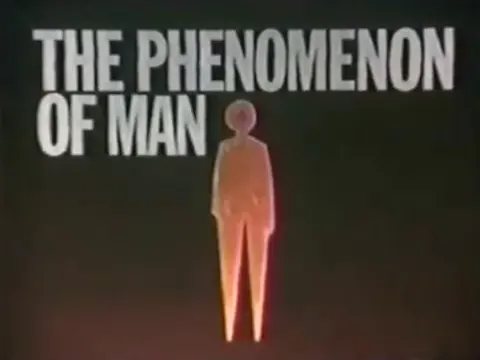
Survival
Teilhard de Chardin's book, The Phenomenon of Man, reinterpreted in a visual format to illustrate the complex topics covered therein.
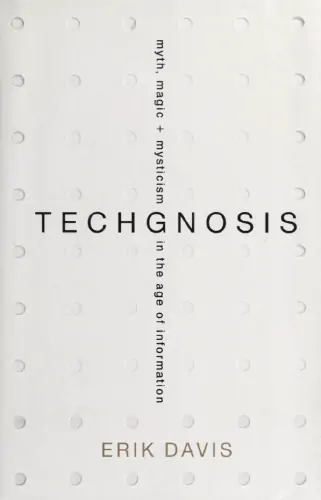
TechGnosis
Myth, Magic, and Mysticism in the Age of Information
How does our fascination with technology intersect with the religious imagination? While the realms of the digital and the spiritual may seem worlds apart, esoteric and religious impulses have in fact always permeated (and sometimes inspired) technological communication. Erik Davis uncovers startling connections between such seemingly disparate topics as electricity and alchemy; online role-playing games and religious and occult practices; virtual reality and gnostic mythology; programming languages and Kabbalah. The final chapters address the apocalyptic dreams that haunt technology, providing vital historical context as well as new ways to think about a future defined by the mutant intermingling of mind and machine, nightmare and fantasy.
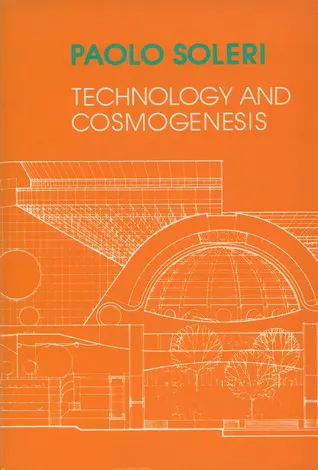
Technology and Cosmogenesis
A hopeful antidote to the destruction of man's environment caused by technology divorced from spirituality. Paolo Soleri, the renowned architect, urban planner, process philosopher and alchemist of the new spirituality of science and technology, challenges us to let go of our absolutized views of human life and creation. By this release, he holds that we can be healed by a cosmos in the process of becoming divine.

Technology and the Human Environment
Perhaps no futurist has been more energetic, more vocal, more popular, or more optimistic than a seventy-six-year-old engineer-visionary, poet-philosopher named R. Buckminster Fuller. Fuller’s planetary perspective has won him zealous converts the world over. Even those who disagree with his technological transcendentalism share unbegrudged admiration for the world’s youngest old futurist.

The Activation of Human Energy
Teilhard sees human energy not as brute force but as consciousness folding back on itself, organizing matter into ever greater complexity. Our survival rests less on fuel than on vision and will. This energy converges toward a final peak—an irreversible surge of awareness—suggesting that spirit, not physics, is the true engine of the cosmos.

The Analysis of Life
Life's essence transcends scientific scrutiny. Though such examination reduces life to physical mechanisms, synthesis reveals the boundless consciousness and freedom underlying all existence. As Teilhard de Chardin contemplated, life organizes chance through each being's innate creativity. From this vision, we can glimpse life's mystical emergence.
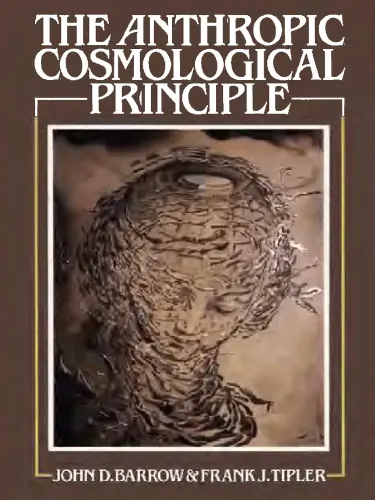
The Anthropic Cosmological Principle
Since Copernicus, science has moved humanity from the center of Creation. However, The Anthropic Cosmological Principle suggests that intelligent observers determine the Universe’s structure. Its radical form asserts that intelligent life must emerge and never die out. Cosmologists John Barrow and Frank Tipler explore the Principle’s implications, from the definition of life to quantum theory. Covering fields like philosophy and astrophysics, this work connects the existence of life with the vast cosmos, engaging a broad audience.
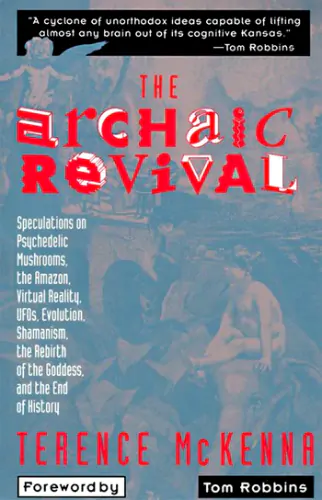
The Archaic Revival
Speculations on Psychedelic Mushrooms, the Amazon, Virtual Reality, UFOs, Evolution, Shamanism, the Rebirth of the Goddess, and the End of History
In these essays, interviews, and narrative adventures, McKenna takes us on a mesmerizing journey deep into the Amazon as well as into the hidden recesses of the human psyche and the outer limits of our culture, giving us startling visions of the past and future.

The Atomism of Spirit
Teilhard de Chardin argues that human plurality mirrors the multiplicity of atoms and stars. Just as matter progresses in complexity from subatomic particles to living cells, so consciousness evolves through increasing unification, culminating in the “Omega point”—supreme consciousness and union.

The Biosphere and the Noösphere
A general intellectual outlook of one of the most remarkable scientific leaders of the early twentieth century, focusing on a predicted historical and planetary phase transition in which humanity becomes a united force.

The Christic
The universe is evolving toward a profound unity where science and spirituality merge, Teilhard says. He envisions human consciousness and the cosmos intertwined, sparking a transformative energy that unites all life in a new, dynamic spirituality—an awakening that promises to ignite our collective future.

The Co-Evolution of the Extended Mind and the Internet
We don’t need brain implants to become cyborgs—we already are. Halpin argues that technology and humans have co-evolved, extending our minds beyond biology. Using the Extended Mind Hypothesis, he shows how everyday tools like smartphones integrate with cognition, shaping thought and memory. Rather than a futuristic AI takeover, we’re already merging with machines in a subtler, more profound way.

The Coming Technological Singularity
How to Survive in the Post-Human Era
Within thirty years, we will have the technological means to create superhuman intelligence. Shortly after, the human era will be ended. Is such progress avoidable? If not to be avoided, can events be guided so that we may survive? These questions are investigated. Some possible answers (and some further dangers) are presented.
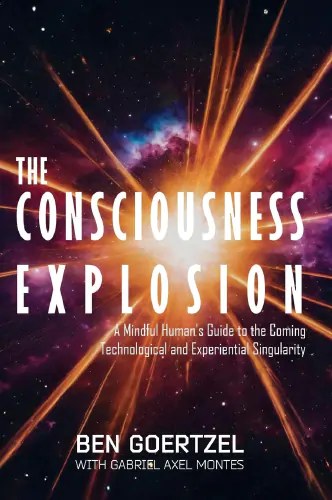
The Consciousness Explosion
A Mindful Human's Guide to the Coming Technological and Experiential Singularity
The pace of engineering and science is speeding up, rapidly leading us toward a technological Singularity—a point in time when superintelligent machines achieve and improve so much so fast, traditional humans can no longer operate at the forefront. However, if all goes well, human beings may still flourish greatly in their own ways in this unprecedented era. If humanity is going to not only survive but prosper as the Singularity unfolds, we will need to understand that the Technological Singularity is an Experiential Singularity as well, and rapidly evolve not only our technology but our level of compassion, ethics and consciousness. Great for curious and open-minded readers who want to wrap their brains around these dramatic emerging changes and empower themselves with tools to adapt and thrive.

The Convergence of the Universe
In examining cosmic drift, Teilhard illuminates humankind's role in the universe's inexorable convergence. We stand at an evolutionary precipice, our dawning self-reflection nurturing new heights of consciousness. To embrace this transformation, we must unite, reassess our core values, and pursue collective actualization. Teilhard's vision beckons us to become active participants in cosmogenesis, threads consciously weaving the tapestry of existence. His ideas challenge us to forge an enlightened path, infinite possibilities awaiting our cosmic citizenship.

The Cybernetic Manifesto
Turchin and Joslyn’s manifesto imagines humanity’s next evolutionary leap: just as cells once united to form complex organisms, they foresee humans merging into “super-beings” through direct neural connections, achieving a form of technological immortality. They argue that evolution’s new frontier isn’t biological, but rather conscious and creative, driven by human will instead of natural selection. While not everyone will choose this path of integration, they suggest it’s those who do who will ultimately explore the cosmos.

The Directions and Conditions of the Future
Teilhard de Chardin envisions human evolution as a purposeful journey guided by three intertwined trends: a natural push toward global unity, technological advances that expand our capabilities, and a deepening of reflective consciousness. Yet, he warns that without a genuine inner cohesion—rooted in love and mutual understanding—these forces may lead to a cold, mechanized future. In his view, our destiny is not random but a guided ascent toward a higher, more meaningful collective awareness.

The End of the World
Teilhard explores a cosmic vision of humanity's future, envisioning a collective consciousness facing a final choice about God. He describes the end of the world not as a disaster, but as a spiritual transformation, and imagines a dramatic unification of all beings with the divine, culminating in a mystical fusion of God and the universe.

The Energy of Evolution
Teilhard de Chardin sees evolution not as blind biology but as energy awakening to thought. Humanity inaugurates a new phase: self-directed, convergent, planetary, driven less by survival than by the magnetism of the future. Evolution’s true axis is consciousness itself, pulled toward an ultimate point of unity where being and becoming fuse.

The Essence of the Democratic Idea
“A biological approach to the problem.” Written in response to a questionnaire from UNESCO and later published in The Future of Man.

The Evolution of Responsibility in the World
Teilhard argues that responsibility isn’t just a social rule but a cosmic imperative. The universe, he claims, is hurtling toward unity—collapsing matter into life, life into consciousness. Today, planetary compression—population growth, tech, and globalization—fuels interdependence. Each choice ripples across humanity: a pilot’s error, a scientist’s discovery, a leader’s word. This isn’t mere ethics; it’s evolution’s demand. As humanity merges into a thinking superorganism, responsibility becomes biological—a binding thread in Earth’s living tapestry, transcending laws to reflect our shared cosmic destiny.

The Formation of the Noösphere
A Biological Interpretation of Human History
The noösphere is the sum-total of mental activity which emerges out of a complex biosphere, and in this essay Teilhard describes how our planet is growing its very own mind.

The Global Brain as a Model of the Future Information Society
The Global Brain paradigm views the emerging global information network connecting humans and technology as a nervous system for Earth's social superorganism. This special issue surveys opportunities and challenges in developing this potentially more intelligent, synergetic system. Contributions explore political, economic, and philosophical aspects, aiming to guide the transition towards a sustainable society empowering diversity.

The Global Superorganism
An Evolutionary-Cybernetic Model of the Emerging Network Society
The organismic view of society is updated by incorporating concepts from cybernetics, evolutionary theory, and complex adaptive systems. Global society can be seen as an autopoietic network of self-producing components, and therefore as a living system or “superorganism”.

The Gnostic Astronaut
Going off the deep end at Shared Visions Bookstore in Berkeley, trailblazer Terence McKenna plunges into freaky psychedelic phenomena that unravel consensual reality. He describes gonzo techniques for sparking glossolalia on 'shrooms—speaking pure alien word salad in an ecstatic state beyond language. McKenna argues these kooky experiences expose the limits of our linguistic operating systems, suggesting our minds are hardwired into a deeper bio-lingo. He ponders far out connections between psychedelics, paranormal events, and alien contact, and emphasizes riding the wave of raw experience over textbook pharmacology in grokking the psychedelic sphere.

The Grand Option
Teilhard explores the choices facing humanity as it undergoes the process of socialization, and examines four paths: pessimism, optimism with withdrawal, individualistic pluralism, and convergent unity. He argues for the path of convergent unity, where socialization leads not to loss of individuality but to differentiation and personalization within a unifying whole, fulfilling humanity’s evolutionary trajectory toward higher consciousness.

The Human Rebound of Evolution and its Consequences
This essay follows Teilhard's train of thought on the aftermath of a potential fusing-together of humanity.

The Moment of Choice
A Possible Interpretation of War
War, Teilhard tells us, is not humanity’s death rattle but its birth cry—the agony of a species pressed toward unity. The tyrant’s dream of domination is a counterfeit evolution; the real ascent is convergence, where nations complete rather than consume one another. Our future will not be forged by violence, but by the one force stronger than force: love, binding us into a single soul of Earth.

The Omega Point as Eschaton
Answers to Pannenberg's Questions for Scientists
Frank Tipler presents an outline of the Omega Point theory, which is a model for an omnipresent, omniscient, omnipotent, evolving, personal God who is both transcendent to spacetime and immanent in it, and who exists necessarily. The model is a falsifiable physical theory, deriving its key concepts not from any religious tradition but from modern physical cosmology and computer science; from scientific materialism rather than revelation. Four testable predictions of the model are given. The theory assumes that thinking is a purely physical process of the brain, and that personality dies with the brain. Nevertheless, he shows that the Omega Point theory suggests a future universal resurrection of the dead very similar to the one predicted in the Judeo-Christian-Islamic tradition. The notions of “grace” and the “beatific vision” appear naturally in the model.
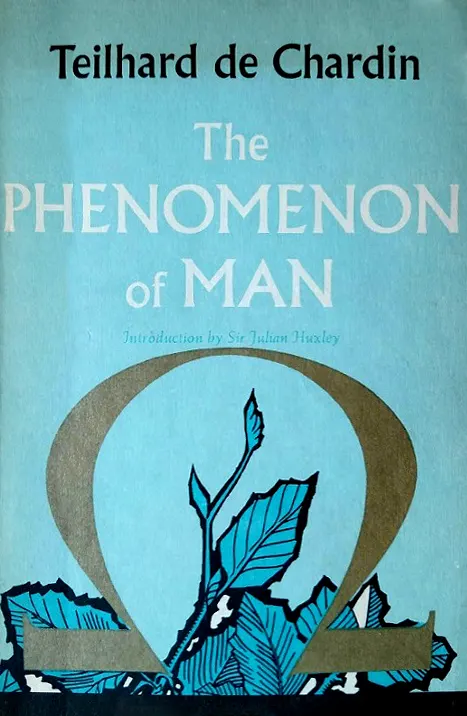
The Phenomenon of Man
Visionary theologian and evolutionary theorist Pierre Teilhard de Chardin applied his whole life, his tremendous intellect, and his great spiritual faith to building a philosophy that would reconcile religion with the scientific theory of evolution. In this timeless book (whose original French title better translates to “The Human Phenomenon”), Teilhard argues that just as living organisms sprung from inorganic matter and evolved into ever more complex thinking beings, humans are evolving toward an “omega point”—defined by Teilhard as a convergence with the Divine.
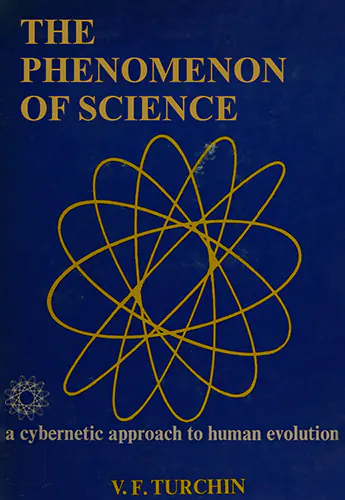
The Phenomenon of Science
A Cybernetic Approach to Human Evolution
Imagine a groundbreaking book that unveils the hidden architecture of intelligence itself. From the humble beginnings of single-cell organisms to the dizzying heights of human culture and science, Valentin Turchin charts the epic journey of cognition. He reveals how each quantum leap in mental prowess—from basic reflexes to abstract reasoning—emerges from a process called “metasystem transitions.” By weaving together cybernetics, evolutionary theory, and the hierarchical nature of mind, Turchin offers a revolutionary perspective on how consciousness evolves. Prepare to see the story of life and thought in an entirely new light.

The Phyletic Structure of the Human Group
Teilhard de Chardin explores the arc of human evolution, tracing humankind's progression from primordial divergence to modern convergence. He argues that we now stand at an equator where further global compression will compel our species to attain unimaginable new heights of consciousness. An eloquent exploration of our place in the cosmos and destiny as thinking beings.

The Place of Technology in a General Biology of Mankind
Teilhard argues that biology and technology are the same thing: technology is simply advanced biology which has reached a minimum threshold of self-awareness, allowing it to harvest and sheperd energy from its environment and utilize it to intelligently organize matter for further evolutionary development.

The Plot Thickens, the Stakes Rise
McKenna discussed his theory that humanity is accelerating towards a transcendental object at the end of time, propelled by ever-increasing novelty. He argued that the internet and new technologies like virtual reality are expanding consciousness in this trajectory. McKenna was especially excited about the legal psychedelic salvia divinorum, urging people to explore it and other plants as allies toward reaching higher states of awareness before the culmination of cosmic evolution.

The Position of Man in Nature and the Significance of Human Socialization
Is there in the universe a main axis of evolution? Pierre Teilhard de Chardin argues for the centrality and progressive direction of life, human thought, and social bonds in cosmic unfolding. His four propositions lead to the bold claim that Christianity drives humanity's spiritual ascent, culminating in a transcendent fulfillment.

The Primacy of Direct Experience
In this, the closing session of a June 1994 workshop, Terence McKenna tells us directly what he thinks this human life is actually about: the primacy of direct experience; a focus on the present-at-hand.

The Psychological Conditions of the Unification of Man
Teilhard discusses the objective and subjective conditions necessary for humankind to maintain its passion for unification and progress. Objectively, the universe must be perceived as open and centered towards the future. Subjectively, humanity must develop a heightened sense of the irreversible, the cosmic, and a faith that serves as a driving force for the world's advancement, which he suggests can be found in a properly understood Christianity.

The Religious Value of Research
Teilhard casts scientific research as humanity’s next evolutionary pulse—our collective mind awakening to shape its own future. He argues that the modern hunger to know and create is nothing less than evolution reflecting on itself, a divine power working through human inquiry. For him, research becomes sacred: the meeting point where faith in God and faith in human potential fuse into a single, world-transforming spiritual force.

The Rise of the Other
“Never has the earth vibrated with more spiritual intensity”—Teilhard de Chardin sees our current global conflicts as growing pains of human evolution. He envisions our increasing interconnectedness not as a threat, but as a path to higher consciousness. As we develop a “sense of man” and universal love, we may transcend our struggles, forming a unified superorganism—the next leap in cosmic evolution.

The Sense of Man
Humanity is not a scatter of individuals, but the birth of a single mind—the noosphere. Just as life once ignited from matter, thought now ignites from life. Teilhard says our task is no longer survival alone, but conscious evolution to forge a unified destiny where the universe awakens to itself through us.

The Sense of the Species in Man
Teilhard de Chardin explores humanity’s evolution from instinct-driven animals to self-aware individuals, and now towards a globally interconnected noosphere. He argues that as our planet becomes more crowded, we must develop a “new sense of the species”—a conscious drive towards collective fulfillment and advancement. This involves improving human genetics, scientific discovery, and fostering unity through love and shared purpose, all aimed at humanity’s continued growth and cosmic significance.

The Social Superorganism and its Global Brain
Society can be viewed as a multicellular organism, with individuals in the role of the cells. The network of communication channels connecting individuals then plays the role of a nervous system for this superorganism, i.e. a “global brain.”

The Spirit of the Earth
Teilhard depicts humanity as the Earth awakening to itself, evolution rising toward ever-greater unity. Love and consciousness converge into a planetary spirit, but this ascent, he insists, cannot endure without religion—our innate need for an absolute that calls us forward. In the universe’s unfolding, God emerges as evolution’s necessary summit and sustaining fire.

The Stuff of the Universe
Gazing upon the island of Saint Helena during his voyage from New York City to the Cape Peninsula, Teilhard de Chardin articulates his vision of human evolution culminating in cosmic unity with the Christ—the ultimate center of consciousness and complexity in the universe.

The Third Story of the Universe
Brian Swimme explores the concept of the noosphere.

The Transformation and Continuation in Man of the Mechanism of Evolution
How does humanity fit into evolution's arc? Teilhard de Chardin argues that we represent not an endpoint, but an intensification of evolution's complexity and consciousness. As technology and social bonds grow, he sees not disaster but hope—perhaps mankind is evolving toward an “ultra-hominization,” a perfected global mind.

The Transition from the Biosphere to the Noösphere
Vernadsky explores how human knowledge transforms Earth’s biosphere into the “noosphere,” a new geological state driven by science and culture. He highlights how life, especially human activity, reshapes the planet through energy and innovation, from ancient fire mastery to modern technology. This dynamic interplay between life and Earth reveals a fascinating, ever-evolving story of our planet’s history and humanity’s profound impact on its future.

The Ultimate Unity for Thought is the Society of Minds
This lofty philosophical treatise passionately argues that the pinnacle of thought and being is a divine society of free spirits in fellowship, whose joyful self-realization through mutual service and growth comprises the final purpose of all creation. Our supreme hope is participation in this Community of Minds.

The Universe Enlightened
Harding argues that awakening isn’t private but cosmic: to truly know yourself is to rediscover a living, intelligent universe. Modern science, he claims, quietly supports this ancient vision. When the illusion of a separate self dissolves, the universe itself wakes up as home, alive and coherent.

The Urban Effect
A Doctrine of the Infant God
Like a cosmic infant slowly learning to walk, reality is toddling towards its divine potential in this essay by Soleri. Through the urban effect of dense interactions, lifeless matter evolves in complexity and miniaturization, transforming into living spirit. The cosmic journey culminates when all moments coexist in esthetic equity.

The Vision of a Better World
Two visionaries, Tom Munnecke and Barbara Marx Hubbard, engage in an uplifting dialogue exploring the emergence of human creativity and consciousness. They trace inspirations from mentors like Jonas Salk, who recognized futuristic possibilities in Hubbard, and Buckminster Fuller, who affirmed humanity's potential. Together they shine light on the crisis of our times as the birth pangs of a new civilization, calling us to connect with the creativity arising globally. Their exchange weaves threads of hope and positivity, envisioning a future where all people actualize their gifts in service of our world.
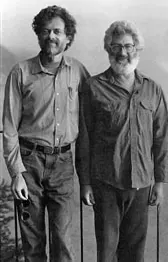
The World Wide Web and the Millennium
Seldom do we have an opportunity to test the accuracy of oracular predictions, but this fascinating conversation between two great thinkers has already proven to be right on target. Speculations include the future evolutionary development of the Internet, whether it is an embryonic intelligence, whether it will merge our minds into a planetary consciousness, or whether it is an alien brain waiting for humanity to cross an evolutionary threshold. Let the bard and the chaos theorist weave an exquisite cybernetic fantasy for you in this evening seminar.

The Zest for Living
Teilhard de Chardin’s Zest for Living reveals life’s deepest impulse—the will not just to survive, but to “super-live.” This inner drive fuels cosmic evolution toward greater consciousness. To sustain humanity’s future, he urges a renewal of faith and wonder—a universal spirituality that rekindles our passion for being and becoming.
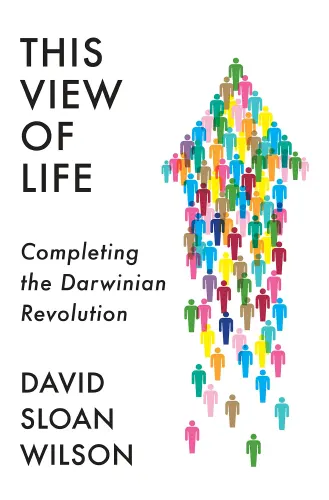
This View of Life
Completing the Darwinian Revolution
It is widely understood that Charles Darwin’s theory of evolution completely revolutionized the study of biology. Yet, according to David Sloan Wilson, the Darwinian revolution won’t be truly complete until it is applied more broadly—to everything associated with the words “human,” “culture,” and “policy.” In a series of engaging and insightful examples—from the breeding of hens to the timing of cataract surgeries to the organization of an automobile plant—Wilson shows how an evolutionary worldview provides a practical tool kit for understanding not only genetic evolution but also the fast-paced changes that are having an impact on our world and ourselves. What emerges is an incredibly empowering argument: If we can become wise managers of evolutionary processes, we can solve the problems of our age at all scales—from the efficacy of our groups to our well-being as individuals to our stewardship of the planet Earth.

Touched by the Tremendum
Terence McKenna suggests ancient African societies used psychedelic mushrooms in communal rituals, leading to reduced ego and increased cooperation. When climate change disrupted this harmony, it pushed humans into the “nightmare of history” dominated by ego and competition. McKenna advocates for reconnecting with psychedelics, particularly psilocybin and DMT, as tools for dissolving ego-boundaries and potentially saving our planet from ecological crisis. The talk concludes with a lively debate about the practicality of his vision.

Understanding the Chaos at History's End
Delivered at the end of McKenna’s first month as scholar-in-residence at Esalen, when he began a new phase in his public speaking career. This weekend workshop provides an early glimpse at Terence’s description of the looming “transcendental object at the end of time,” and the psychedelic insights which led him to become an oracle.

Universalization and Union
An Attempt at Clarification
Teilhard examines the tumultuous state of humanity during World War II, proposing a cosmic perspective on our collective destiny. He argues that beneath the chaos lies a grand process of universal synthesis, driven by increasing complexity and consciousness. He sees the war as a critical point in human evolution, heralding the emergence of a global consciousness. Despite apparent divisions, Teilhard envisions a convergence of ideologies towards a unified, personalized humanity. He urges all to embrace universalism, believing this path will lead to mutual understanding and ultimate unity.

Virtual Reality and Electronic Highs
On Becoming Virtual Octopi
Terence discusses virtual reality technology, which allows people to have immersive experiences in digital worlds. He describes the state of VR in the 1990s and speculates on its future implications, both positive and negative. He reflects on how VR could lead to new forms of communication and imagination, but also trivial entertainment. If used thoughtfully, he concludes, VR holds tremendous transformative potential.
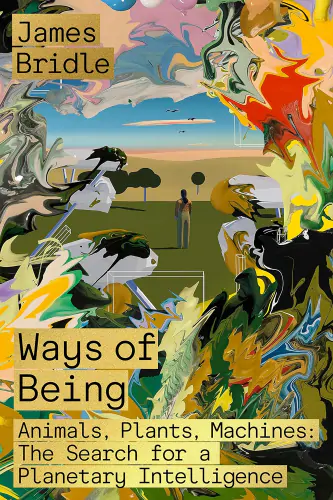
Ways of Being
Animals, Plants, Machines: The Search for a Planetary Intelligence
What does it mean to be intelligent? Is it uniquely human, or shared with other beings—animals, plants, machines? As AI advances, it becomes a strange, even alien force, challenging our place in the world. Meanwhile, other intelligences—natural systems we’ve overlooked—reveal their agency and complexity. In Ways of Being, James Bridle explores these intelligences through biology, physics, and art, urging us to rethink our technologies and societies for a more equitable coexistence with the nonhuman world. Bold and thought-provoking, it’s essential for our survival.

What is the Noosphere?
Planetary Superorganism, Major Evolutionary Transition, and Emergence
Picture Earth evolving a new layer—not of rock or life, but of thought and technology. This “noosphere” is like a planetary brain emerging through our global networks, satellites, and collective intelligence. The paper explores how this mysterious transformation could represent Earth’s next evolutionary leap, potentially leading to planetary consciousness or even contact with other cosmic minds. It’s happening right now, though we’re still figuring out how to guide this planetary metamorphosis.

World Wide Brain
The Emergence of Global Web Intelligence and How it Will Transform the Human Race
Ben Goertzel says the Internet is evolving towards a “global Web mind”–an emergent, distributed intelligence surpassing human capabilities. This development, grounded in complexity science, could solve AI’s scalability issues and merge humanity with technology. While potentially solving global problems, it raises concerns about individual freedom. Drawing parallels with spiritual concepts like the noösphere and collective unconscious, this evolution is seen as inevitable and transformative. As we nurture this new form of life, we stand at the threshold of a profound shift in human consciousness and global interconnectedness.

Zoological Evolution and Invention
Humanity’s growing interconnection isn’t a social accident, says Teilhard, but evolution becoming self-aware. If life is now reflecting on—and reinventing—itself, then watching human creativity may reveal how new biological forms once emerged. He asks whether “invention,” not just chance and selection, has always nudged life toward greater complexity. In a universe drifting toward the improbable, he wonders: when did consciousness begin steering evolution?